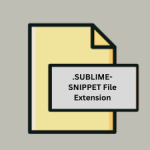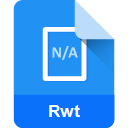.XPS File Extension

XML Paper Specification File
| Developer | Microsoft |
| Popularity | |
| Category | Page Layout Files |
| Format | .XPS |
| Cross Platform | Update Soon |
What is an XPS file?
The .XPS file extension stands for XML Paper Specification, a file format developed by Microsoft to provide an electronic representation of digital documents.
Similar to Adobe’s PDF (Portable Document Format), XPS files are used for sharing, viewing, and printing documents without needing the original software that created them.
This article explores the origins, technical aspects, advantages, disadvantages, conversion methods, and how to open .XPS files across different operating systems.
More Information.
The initial purpose of the .XPS format was to serve as a direct competitor to Adobe’s PDF.
It aimed to provide a reliable, cross-platform format for documents that preserved layout, fonts, and other elements precisely as intended by the document creator.
Origin Of This File.
Microsoft introduced the XML Paper Specification format in 2006 as part of its efforts to create a standardized way to represent electronic documents.
The primary motivation was to offer a format that retained document fidelity across different platforms and printers, ensuring documents looked the same regardless of where they were viewed or printed.
File Structure Technical Specification.
.XPS files are structured using XML (Extensible Markup Language), a standard for encoding documents in a format that is both human-readable and machine-readable.
They can include text, vector graphics, raster images, fonts, and other elements necessary for accurate document reproduction.
The structure also supports digital rights management (DRM) capabilities, allowing creators to control access and usage permissions.
How to Convert the File?
Converting .XPS files to other formats like PDF or images can be useful for broader compatibility and sharing. Several methods exist:
- Using Microsoft Tools: Windows includes built-in tools to convert XPS to PDF using the Print dialog or specialized software like Microsoft XPS Viewer.
- Third-Party Software: Various third-party applications offer conversion services between XPS and other formats.
- Online Converters: Web-based converters can also handle XPS conversions to popular formats.
Advantages And Disadvantages.
Advantages:
- Consistency: Documents appear the same across different devices and platforms.
- Security: DRM capabilities help protect intellectual property.
- Print Quality: XPS files maintain high-quality printing standards.
- Integration: Native integration with Windows and Microsoft Office applications.
Disadvantages:
- Compatibility: Limited support outside of Windows and some third-party applications.
- File Size: XPS files can be larger compared to equivalent PDFs due to XML formatting.
- Adoption: Despite being a standard on Windows, broader adoption remains limited.
How to Open XPS?
Open In Windows
- Microsoft XPS Viewer: Included in Windows, XPS Viewer allows viewing and printing XPS documents.
- Microsoft Edge: Modern versions of Edge support viewing XPS files directly within the browser.
Open In Linux
- Evince: Popular document viewer on Linux that supports XPS files.
- LibreOffice: Can import XPS files for viewing and conversion.
Open In MAC
- Third-Party Applications: Tools like Adobe Acrobat or third-party XPS viewers can be used to open XPS files on macOS.













